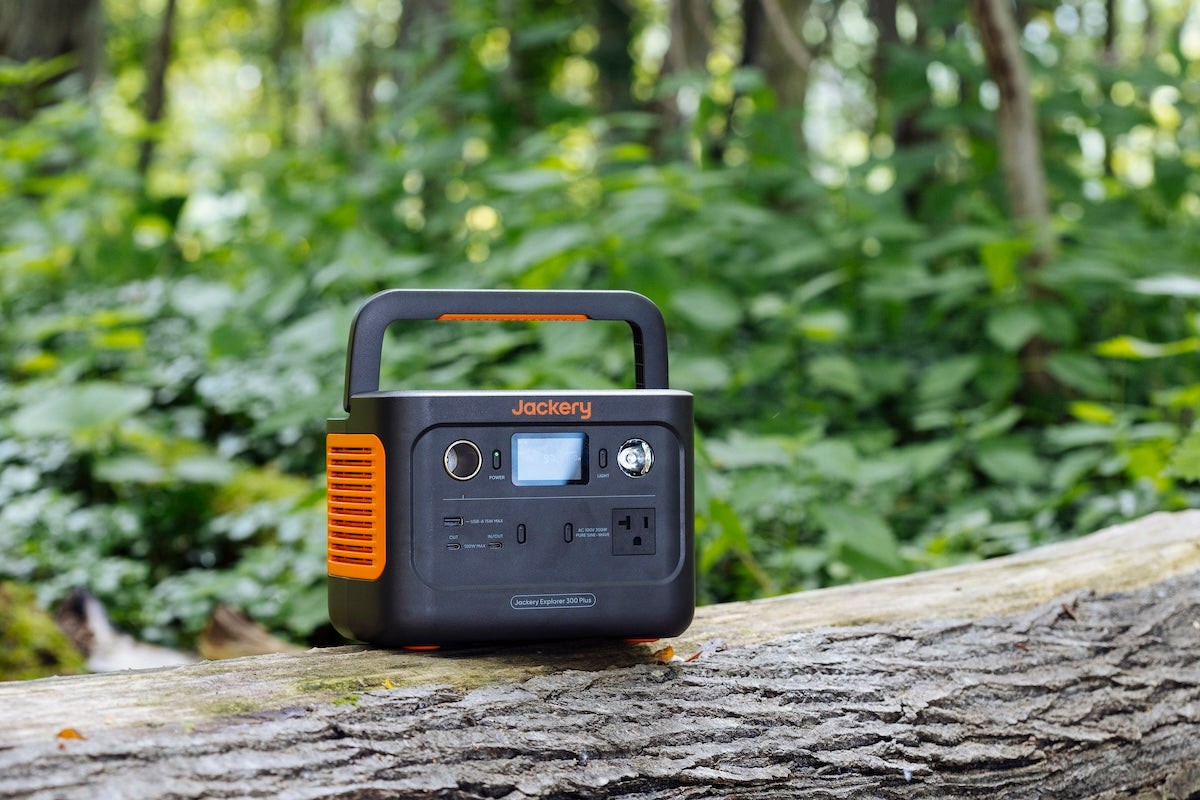Are you wondering how many amps a car battery holds? The answer depends on several factors, but CARS.EDU.VN is here to provide you with a comprehensive understanding. Knowing the amperage of your car’s power supply, battery voltage and electrical circuit is essential for maintaining your vehicle’s health and ensuring it starts reliably every time. Discover insights into battery capacity, cold cranking amps (CCA), and how these factors affect your car’s performance.
1. Understanding Car Battery Amperage
The amperage of a car battery signifies its capacity to deliver electric current. Understanding this is crucial for anyone looking to maintain their vehicle’s electrical system. Typically, you’ll find that smaller vehicles use batteries with lower amperage, while larger vehicles need batteries with higher amperage to handle the increased electrical demands. Let’s delve into the specifics of car battery amperage.
Smaller vehicles like compact cars often have power sources ranging from 400 to 600 amps. These batteries are designed to meet the basic electrical needs of the vehicle, such as starting the engine, powering the lights, and running the radio. The amp rating is sufficient for these tasks in smaller vehicles.
Larger vehicles like trucks and vans require a more robust power source to handle their heavier engines and additional electrical systems. These vehicles typically use batteries with amperage ratings of 800 to 1,000 amps or even higher. This increased amperage ensures that the battery can reliably start the engine and power all the vehicle’s accessories.
The engine type, capacity, and size significantly influence the amp rating. Larger engines require more power to turn over during starting, necessitating batteries with higher amperage. Vehicles with many electronic accessories, such as advanced audio systems, heated seats, and navigation systems, also demand more power, requiring a higher amperage battery.
Car batteries often have an amp hour (Ah) rating, indicating how long the battery can sustain a continuous current draw. For example, a 48Ah battery can deliver 1 amp for 48 hours or 2 amps for 24 hours. This rating is crucial for understanding how long the battery will last under different usage conditions.
Understanding these different aspects of car battery amperage can help you choose the right battery for your vehicle and maintain its electrical health. For more detailed information and expert advice, visit CARS.EDU.VN.
2. Key Electrical Terms Explained
Understanding the basics of electricity is essential when dealing with car batteries. Knowing the difference between amps, volts, watts, and running watts will help you make informed decisions about your car’s electrical system. These terms are interconnected, and grasping their relationship can significantly improve your understanding of battery performance.
-
Amps (Amperage): Amps measure the amount of electric current flowing through a circuit. It’s the rate at which electrons move through a wire. Car batteries typically range from 400 to 1000 amps, indicating their capacity to deliver electric current.
Amps = Watts ÷ Volts
-
Volts (Voltage): Voltage represents the electric potential difference, or the pressure that pushes the electric current through a wire. A car’s battery voltage usually ranges from 12.6V to 14.4V.
Volts = Watts ÷ Amps
-
Watts (Wattage): Wattage indicates power and is a widely used unit of electricity. It measures the amount of power consumed by an electrical device. For example, a 12V car battery with 400 amps will have a wattage of around 4800W.
Watts = Volts × Amps
-
Running Watts: When the car’s engine is running, the battery voltage typically increases to between 13.5 and 14.5 volts. The alternator boosts the battery to these higher levels to keep the electrical systems running and recharge the battery.
These units are interrelated by Ohm’s law, which states that voltage equals current times resistance (V = I x R). Understanding these relationships will help you better diagnose and maintain your car’s electrical system.
For more in-depth explanations and practical tips, explore the resources available at CARS.EDU.VN, where you can find expert guidance on car maintenance and electrical systems.
3. Amperage Based on Car Battery Types
Different types of car batteries have varying amp-hour ratings, reflecting their capacity to deliver power over time. The amp-hour rating indicates how long the battery can sustain a continuous current draw before reaching its cutoff voltage. Understanding these differences is crucial for selecting the right battery for your vehicle’s needs.
If the amp rating measures the maximum amount of amperes in the car battery, the amp hour rating indicates how long the battery can last. Small cars feature a 40Ah battery, whereas large vehicles have a 50Ah battery. Some oversized vehicles use batteries with a capacity of around 75Ah. These ratings are usually when the voltage is 12V. If the voltage is decreased from 12V to 6V, it also affects the amp rating. A 6V battery can generally supply a maximum of 2 amp current.
How many cranking amps a car battery has affects the power it can output. The number of cold cranking amps (CCA) of a car battery depends on the engine size. On average, most cars have CCA between 250 and 600 CCA.
Here’s a table revealing the volts, amp hours, and watts of different car batteries:
| Car Battery Sizes | Car Battery Wattage | Volts | Amps Hours |
|---|---|---|---|
| Small Car | 480W | 12V | 40Ah |
| Large Vehicle | 600W | 12V | 50Ah |
| Oversized Vehicle | 900W | 12V | 75Ah |




This table provides a clear overview of the different power capacities of car batteries based on vehicle size. Knowing these specifications can guide you in selecting the appropriate battery for your car.
For more detailed information and personalized advice, visit CARS.EDU.VN. Our experts can help you navigate the complexities of car batteries and ensure you choose the best option for your vehicle.
4. Starting Amps Explained
The number of amps a car battery draws on startup depends on several factors, including the engine type, capacity, and size. This initial surge of power is crucial for getting the engine running. Understanding how many amps your car battery needs during startup can help you ensure your battery is performing optimally.
Generally, car batteries use somewhere between 100 – 400 amps while cranking. It needs an initial surge of 2-3 times the rated amps for a few seconds, which means car batteries might need 200 – 1200 amps on startup. Certain large car engines might need around 1000 amps during cranking. You can calculate the starting amps using the below formula:
Startup Amps = Running Amps × (2-3)
The size and type of engine play a significant role in determining the starting amps. Larger engines require more power to turn over during startup, necessitating a higher amperage draw. For instance, a large truck engine might require close to 1000 amps, while a smaller car engine may only need 200-400 amps.
Cold weather can also affect the number of amps needed to start a car. Lower temperatures increase the viscosity of engine oil, making it harder for the engine to turn over. This requires the battery to supply even more amps during startup.
An aging or poorly maintained battery may struggle to deliver the required starting amps, leading to starting problems. Regular battery maintenance, including cleaning the terminals and checking the voltage, can help ensure it delivers the necessary power.
Understanding the starting amps of your car battery can help you troubleshoot starting issues and maintain your vehicle’s electrical system. For more detailed information and expert advice, visit CARS.EDU.VN. Our resources can provide you with the knowledge and tools to keep your car running smoothly.
5. Methods to Calculate Car Battery Amps
Calculating your car battery’s amps is essential for ensuring it meets your vehicle’s needs. Whether you’re looking to replace your battery or troubleshoot electrical issues, knowing how to determine the amperage is crucial. Here are a few methods to help you calculate your car battery’s amps accurately.
5.1. Manufacturer Details
The easiest way to find out the amperage of your car battery is by checking the manufacturer’s label. Most car batteries have their amp ratings prominently displayed on the visible spot, so you don’t have to perform any calculations. Look for a sticker or label on the battery that lists the amperage, cold cranking amps (CCA), and amp-hour (Ah) ratings.
If you can’t find the rating on the vehicle, consider looking for the car’s exact model on the manufacturer’s website. You can also consult a professional mechanic about the amp rating of the battery and vehicle.
5.2. Determine the Amps from the Ohms
If you don’t know the total capacity and current capacity of the car battery, you just can’t charge it for hours. For this reason, it is essential to calculate the car battery amps. In order to measure the amps of the car battery, you will need to know the ohm rating first. Here’s the formula to calculate the amps from ohm rating:
Amps = Volts ÷ Ohms
- Measure the Voltage: Use a multimeter to measure the voltage of your car battery. Ensure the battery is fully charged for an accurate reading.
- Measure the Resistance (Ohms): Use a multimeter to measure the resistance in ohms.
- Calculate the Amps: Divide the voltage by the resistance to find the amperage.
5.3. Use a Multimeter
A multimeter is a versatile instrument that can help you measure the voltage, amps, and resistance. You can integrate the multimeter into the circuit and turn on the battery power to measure the current flowing from the car battery to the load.
- Set Up the Multimeter: Set the multimeter to measure direct current (DC) amps.
- Connect the Multimeter: Connect the multimeter in series between the positive terminal of the battery and the positive cable.
- Read the Amperage: Turn on the ignition and observe the amperage reading on the multimeter. This will show you the current draw from the battery.
By using these methods, you can accurately calculate your car battery’s amps and ensure it meets your vehicle’s electrical needs. For more detailed instructions and expert advice, visit CARS.EDU.VN. Our resources can guide you through the process and help you maintain your car’s electrical system.
6. Tips to Maximize Car Battery Lifespan
Maximizing the lifespan of your car battery involves a few simple yet effective maintenance practices. Proper care not only extends the battery’s life but also ensures reliable performance. Here are practical tips to help you prolong your car battery’s lifespan.
-
Regularly Check the Battery: Inspect your car battery regularly for any signs of corrosion or damage. Clean the terminals with a wire brush and a solution of baking soda and water to remove any buildup.
-
Avoid Short Trips: Short trips can prevent the battery from fully charging, leading to a reduced lifespan. Ensure your battery has enough time to recharge by taking longer drives occasionally.
-
Turn Off Lights and Accessories: Before turning off your car, make sure all lights, radio, and other accessories are switched off. Leaving them on can drain the battery and shorten its lifespan.
-
Limit Accessory Use When Idling: Avoid using power-hungry accessories like the air conditioning or radio for extended periods while the engine is idling. This can put unnecessary strain on the battery.
-
Proper Storage: If you need to store your car for an extended period, disconnect the battery to prevent it from draining. Store the battery in a cool, dry place.
-
Test the Battery Regularly: Have your car battery tested periodically by a professional mechanic. This can help identify potential issues before they lead to battery failure.
-
Maintain Proper Voltage: Ensure your car’s charging system is functioning correctly. Overcharging or undercharging can damage the battery and reduce its lifespan.
By following these tips, you can significantly extend the life of your car battery and avoid unexpected breakdowns. For more detailed maintenance advice and expert tips, visit CARS.EDU.VN. Our resources can help you keep your car in top condition.
7. Solar Generators For Car Battery Charging
Solar generators offer a sustainable and reliable way to charge car batteries, especially in remote locations where access to traditional power outlets is limited. These generators use solar panels to capture sunlight and convert it into electricity, providing a clean and renewable energy source. Here’s how solar generators can be used for car battery charging.
Solar generators consist of solar panels, a battery pack, and an inverter. The solar panels capture sunlight and convert it into direct current (DC) electricity. This DC electricity is then stored in the battery pack. The inverter converts the DC electricity into alternating current (AC) electricity, which can be used to power various devices, including car battery chargers.
When your car battery dies in a remote location, you need a reliable power source such as Jackery Solar Generators. These solar-powered generators can charge car batteries with the help of the Jackery 12V Automobile Battery Charging Cable. While Jackery Portable Power Stations cannot jumpstart your car, they are power car batteries (except for electric bikes).
The foldable solar panels from Jackery can be placed under direct sunlight to absorb and generate DC electricity. Then, it is passed to the pure sine wave inverter of the portable power stations to convert DC to AC electricity to charge appliances and car batteries. If you are looking for the right solar generator that can meet the wattage needs of car batteries, here are the three options to check out:
7.1. Jackery Solar Generator 600 Plus
The Jackery Solar Generator 600 Plus is a portable and compact charging solution for charging different car battery types. It seems ideal for those planning a short camping trip to a remote location and needing the power to charge car batteries and other outdoor appliances. The small generator has a compact design and can easily fit in the vehicle’s rear compartment.
7.2. Jackery Solar Generator 1000 Plus
If you’re planning a weekend trip and want a reliable charging solution for powering car batteries, then you may consider the Jackery Solar Generator 1000 Plus. It can charge 99% of household or outdoor appliances for hours to ensure you always have enough power for the trip. It can also act as an emergency solar battery backup during power outages or blackouts.
7.3. Jackery Solar Generator 2000 Plus
The Jackery Solar Generator 2000 Plus is a large-size battery backup solution that can charge most household or outdoor appliances, including car batteries. This whole-home battery backup features a pull rod, double wheels, and an ergonomic design for quick movement from one place to another. It’s also expandable, and the additional Jackery Battery Pack 2000 Plus lets you extend the battery capacity from 2kWh to 24kWh.
| Jackery Products | Capacity & Output Watts | Car Battery Running Time |
|---|---|---|
| Jackery Solar Generator 600 Plus | Capacity: 632Wh Rated Output: 800W | Small Car (480W) = 1.1H Large Vehicle (600W) = 53 minutes |
| Jackery Solar Generator 1000 Plus | Capacity: 1264.64Wh Rated Output: 2000W | Small Car (480W) = 2.2H Large Vehicle (600W) = 1.7H Oversized Vehicle (900W) = 1.1H |
| Jackery Solar Generator 2000 Plus | Capacity: 2042.8Wh Rated Output: 3000W | Small Car (480W) = 3.6H Large Vehicle (600W) = 2.8H Oversized Vehicle (900W) = 1.9H |
For environmentally conscious car owners, solar generators are an excellent investment. They provide a sustainable, reliable, and cost-effective way to maintain car batteries, ensuring you’re never stranded with a dead battery. For more information on selecting the right solar generator for your needs, visit CARS.EDU.VN.
8. Saving on Electricity Bills While Charging
With rising electricity costs, finding ways to save on your electricity bill while charging car batteries is crucial. Implementing energy-efficient practices can significantly reduce your expenses. Here are several tips to help you save electricity while maintaining your car battery.
Maintain Your Car Battery: You should regularly check the car battery to ensure appropriate charging. A well-maintained car battery requires less frequent charging.
Charge During Off-Peak Hours: If your electricity provider offers off-peak hour rates, make sure to charge the car batteries during those times. This will help you reduce the cost per unit of electricity, which ultimately saves you on electrical bills.
Avoid Trickling: If you don’t need to keep the car battery charged all the time, avoid leaving it on a trickle charger. These low-amp chargers are designed to charge a battery slowly over a more extended period. Even though trickle chargers use less power, they still add to your electricity bill over time.
Invest in Solar Energy: You can also consider purchasing a solar battery backup to charge car batteries without drawing electricity from the grid. Jackery Solar Generators are designed to supply safe power to the car batteries when you’re away from the power outlets. They can also charge other household appliances to reduce monthly electricity bills further.
By implementing these strategies, you can effectively reduce your electricity bill while ensuring your car battery remains in optimal condition. For more energy-saving tips and expert advice, visit CARS.EDU.VN. Our resources can help you make informed decisions and save money on your car maintenance.
9. Addressing Customer Challenges
At CARS.EDU.VN, we understand the challenges car owners face when dealing with vehicle maintenance and repairs. Finding reliable information and trustworthy services can be overwhelming. That’s why we’re committed to providing comprehensive and accessible resources to address your concerns.
Many car owners struggle with finding reputable repair services. It can be difficult to distinguish between reliable mechanics and those looking to overcharge or provide substandard work. CARS.EDU.VN offers a directory of certified mechanics and repair shops, complete with customer reviews and ratings, to help you make an informed decision.
Lack of knowledge about car maintenance is another common issue. Many car owners are unsure about basic maintenance tasks, leading to neglected vehicles and costly repairs down the line. We offer easy-to-understand guides and tutorials on essential maintenance procedures, empowering you to take better care of your car.
Choosing the right car and brand can also be daunting. With so many options available, it’s hard to know which vehicle best suits your needs and budget. CARS.EDU.VN provides in-depth reviews, comparisons, and buying guides to help you navigate the car market with confidence.
Dealing with minor car troubles can be frustrating. Many car owners lack the skills and knowledge to troubleshoot simple issues, resulting in unnecessary trips to the mechanic. We offer troubleshooting guides and step-by-step instructions to help you resolve common car problems at home.
Staying updated on new automotive technologies is also a challenge. The automotive industry is constantly evolving, and keeping up with the latest advancements can be overwhelming. CARS.EDU.VN provides news, articles, and insights on emerging technologies, ensuring you’re always informed.
At CARS.EDU.VN, we aim to be your trusted resource for all things automotive. Whether you need help finding a reliable mechanic, understanding basic maintenance, or staying informed about the latest car technologies, we’re here to support you. Contact us at 456 Auto Drive, Anytown, CA 90210, United States, or reach out via WhatsApp at +1 555-123-4567. Visit our website at CARS.EDU.VN for more information and expert advice.
10. Frequently Asked Questions (FAQs)
10.1. How many amps are in a 12-volt car battery?
A 12-volt car battery typically supplies 30–50 amps but can produce as much as 600 amps. The average car battery has a capacity of nearly 48 amp hours (Ah), which means that when fully charged, it can provide 1 amp for 48 hours. A higher Ah rating indicates a larger capacity and longer endurance.
10.2. Is a car battery 12 amp or 2 amp?
Most car batteries are 12-amp batteries that can produce as much as 600 amps. The exact amperage can be found on the battery or on the manufacturer’s website.
10.3. How many amps for a dead car battery?
Most cars require 400 – 600 CCA to start the engine. However, the number of amps needed to jumpstart a car battery depends on several factors, including the engine’s size, the battery’s age and condition, and the climate.
10.4. How do I check the amps on my car battery?
A digital multimeter can measure a car battery’s amps, volts, and ohms. You can set the multimeter to calculate DC electricity and connect it in series between the negative terminal and the vehicle’s negative cable.
10.5. Can a car run without amps?
No, a car cannot run without amps. Amps are a measure of electric current, and the car’s electrical system requires a certain amount of current to operate. Without sufficient amps, the car’s electrical components, including the starter, ignition system, and electronic control units, cannot function properly.
10.6. What does CCA mean for a car battery?
CCA stands for Cold Cranking Amps. It is a rating that indicates the battery’s ability to start an engine in cold temperatures. The CCA rating specifies the number of amps a battery can deliver for 30 seconds at 0 degrees Fahrenheit (-18 degrees Celsius) while maintaining a voltage of at least 7.2 volts.
10.7. How long should a car battery last?
The lifespan of a car battery typically ranges from 3 to 5 years. Several factors can affect battery life, including climate, driving habits, and maintenance practices. Extreme temperatures, frequent short trips, and lack of maintenance can shorten the lifespan of a car battery.
10.8. What are the signs of a weak car battery?
Signs of a weak car battery include slow engine cranking, dim headlights, frequent jump starts, and a swollen battery case. If you notice any of these signs, it’s essential to have your battery tested by a professional mechanic.
10.9. Can I use a higher CCA battery in my car?
Yes, using a higher CCA battery in your car is generally safe and can provide improved starting performance, especially in cold weather. However, it’s essential to ensure that the battery has the correct voltage and physical size for your vehicle.
10.10. How do I maintain my car battery?
To maintain your car battery, regularly clean the terminals to prevent corrosion, ensure the battery is securely mounted, avoid leaving electronic accessories on when the engine is off, and have the battery tested periodically by a professional mechanic.
Conclusion
Understanding how many amps a car battery is is crucial for maintaining your vehicle’s health. Knowing how to calculate and manage your battery’s amperage ensures it’s never overcharged or damaged. CARS.EDU.VN is your go-to resource for expert guidance on car batteries and overall vehicle maintenance. From selecting the right battery to troubleshooting electrical issues, we provide the knowledge and support you need to keep your car running smoothly.
If you’re looking for reliable and sustainable charging solutions, consider solar generators like those from Jackery. They offer a clean and efficient way to charge your car battery, especially in remote locations. And remember, proper battery maintenance and smart charging habits can save you money on electricity bills.
At CARS.EDU.VN, we’re committed to addressing your car-related challenges and providing the services you need. Visit our website at cars.edu.vn for more information and expert advice. Contact us at 456 Auto Drive, Anytown, CA 90210, United States, or reach out via WhatsApp at +1 555-123-4567. Let us help you keep your car in top condition.
Disclaimer:
The runtime mentioned for appliances powered by Jackery is for reference only. Actual runtime may vary under different conditions. Please refer to real-world performance for accurate results.
Shop products from this article
Jackery Solar Generator 600 Plus
Jackery Solar Generator 1000 Plus